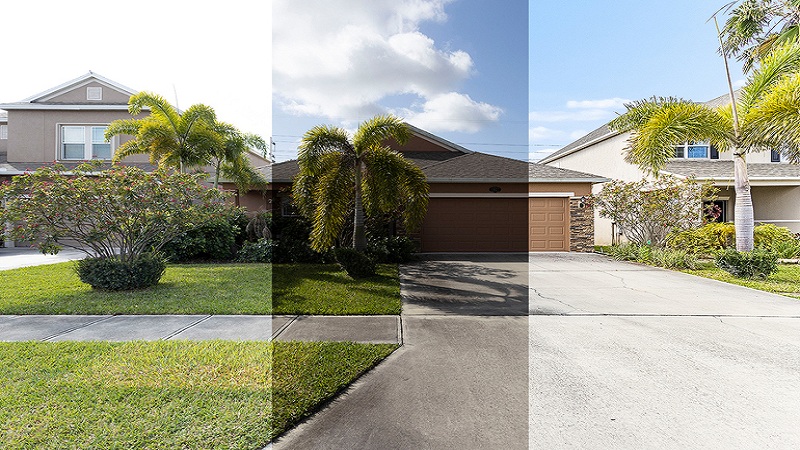Pc for photo editing to selecting the best PC for photo editing, understanding the essential hardware components is paramount. Among the most critical elements is the Central Processing Unit (CPU). A powerful CPU is vital for executing complex tasks and efficiently running photo editing software. Look for processors with multiple cores and high clock speeds, as these features enable faster processing, which is especially important when working with large files or applying resource-intensive adjustments.
Understanding the Essential Components for Photo Editing
The display quality is another crucial aspect to consider. A high-resolution monitor with accurate color reproduction is essential for photo editing, as it ensures that the colors viewed on screen are true to life. Monitors that support a wide color gamut and have calibration capabilities will provide more fidelity in color, which is crucial for making precise adjustments to photographs. Investing in a 4K monitor can enhance detail visibility, allowing for better editing decisions.
Equally important is the amount of Random Access Memory (RAM) in your system. Adequate RAM is necessary for multitasking and ensures that your editing software runs smoothly alongside other applications. For photo editing, a minimum of 16GB of RAM is recommended, although 32GB or more is preferable for professional workflows that involve multi-layer editing and high-resolution files.
A dedicated Graphics Processing Unit (GPU) is also advantageous, as it allows for faster rendering and smoother playback when editing videos or working with heavy graphic tasks. The GPU can significantly reduce the load on the CPU and provide acceleration for various editing effects within applications. Lastly, the choice of storage plays a vital role; Solid State Drives (SSDs) are highly favored over traditional Hard Disk Drives (HDDs) due to their ability to offer faster read and write speeds, resulting in quicker boot times and reduced load times for files. Opting for an SSD can lead to notable improvements in overall editing efficiency.

Recommended Specifications for Different Levels of Photo Editing
When selecting a PC for photo editing, it is essential to consider your level of expertise and editing requirements. Each segment—entry-level, mid-range, and high-end—offers distinct specifications that cater to varying needs and budgets. The following recommendations provide an overview of optimal configurations for each group.
For hobbyists and entry-level users, a budget-friendly PC will suffice. An Intel Core i5 or AMD Ryzen 5 processor paired with 8GB of RAM is often adequate for basic editing tasks. A dedicated graphics card, such as the NVIDIA GeForce GTX 1650 or equivalent, is beneficial, especially for running software like Adobe Photoshop or Lightroom without lag. Storage-wise, a 256GB SSD is recommended for faster load times, complemented by a 1TB HDD for additional file storage. This configuration will deliver satisfactory performance for those just starting their Photo editing journey.
For enthusiastic photographers who regularly edit images and require more robust capabilities, a mid-range setup is advisable. An Intel Core i7 or AMD Ryzen 7 CPU with 16GB of RAM will provide a smoother multitasking experience, especially when working with larger files. Upgrading to a dedicated GPU like the NVIDIA GeForce RTX 3060 enhances performance in complex editing tasks and allows use of advanced features such as GPU acceleration in popular editing software. A 512GB SSD alongside a 2TB HDD will facilitate quicker read/write speeds and ample space for high-resolution images, ensuring an efficient workflow.
Professionals in the field of photo editing should consider high-end configurations designed to handle demanding software and heavy workloads. An Intel Core i9 or AMD Ryzen 9 processor, combined with a minimum of 32GB of RAM, ensures optimal performance for intensive tasks. A high-tier graphics card, such as the NVIDIA GeForce RTX 3080 or similar, provides immense power for rendering and processing images. Storage should consist of at least a 1TB NVMe SSD for rapid access to files, paired with additional HDD space for archiving and backups. This comprehensive setup enables efficient handling of large projects with maximum performance.
Related Posts: Real estate photo editing jobs
Software Considerations and Compatibility with Your PC Build
When selecting a PC for photo editing, understanding the software requirements is crucial for ensuring optimal performance and compatibility. Among the most widely utilized photo editing programs are Adobe Photoshop, Lightroom, and Capture One. Each of these applications has specific hardware requirements that can affect the overall editing experience. For instance, Adobe Photoshop is known for its extensive tools and features, but it can be resource-intensive, particularly when working with large files or multiple layers. To accommodate this, a PC should have sufficient RAM, ideally 16 GB or more, along with a dedicated graphics card that supports GPU acceleration.
Lightroom is often favored for its streamlined workflow and powerful cataloging capabilities. While it is less demanding than Photoshop in terms of system resources, it still benefits significantly from a capable processor and ample RAM. Additionally, Capture One, designed specifically for professional photographers, can also place higher demands on a system, especially when handling raw files. Thus, it is advisable to ensure that any PC build aligns with the minimum specifications recommended by these software providers.
To further enhance the software performance on a chosen PC setup, optimizing settings within each application can yield significant benefits. For example, utilizing smart previews in Lightroom can reduce load times and improve responsiveness when working with high-resolution images. Similarly, enabling GPU acceleration in Photoshop can help alleviate processing bottlenecks during editing tasks. Regularly updating software to the latest versions ensures compatibility and access to new features, while also improving performance. By aligning your hardware choices with software demands, you can enjoy a smoother and more efficient photo editing workflow.

